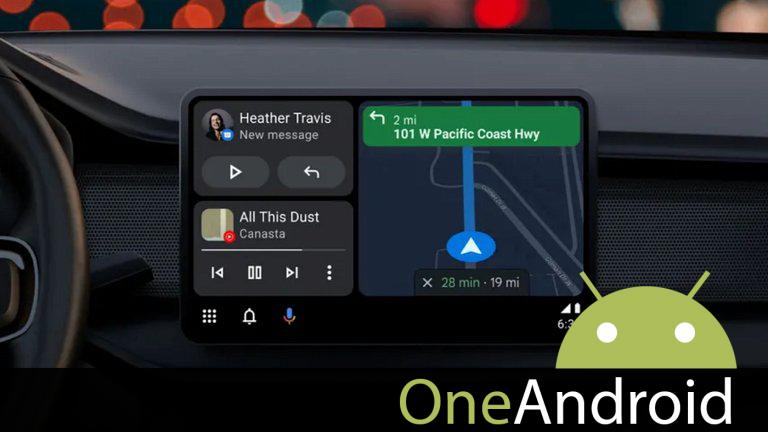The new version of Android Coche based on Android 13 is already here: these are all the changes it includes.

Just a few months after release Android Coche 12LGoogle plus just announced the arrival of the new version of Android Coche based on Android 13.
This new version of Android Coche is based on Android 13 comes full of newswhich we will address below.
These are all new features of Android Automotive 13
This new version of the Android-based car operating system includes a large number of improvements that we must highlight a new version of the Bluetooth stack, active up to the scanning layerSupport for Ultra Wideband (UWB) and the introduction of the Privacy Panel that debuted in Android 12 and beyond It espectáculos you at all times which sensors the vehicle is using.
Complete list of changes included in Android Automotive 13 from here:
- camera
- Android Camera API2 – Allows third-party consumer applications to access one or more in-vehicle cameras simultaneously without impacting the performance and behavior of the Extended Display System (EVS).
- List camera devices by relative location – Allows clients to list and open camera devices (or vídeo streams) based on relative locations, while hiding hardware details (y también.g. device node name) from clients.
- EVS Hotplug Events – Adds notification and management of hotplug cameras.
- frames for cars
- Mainline Car Framework: Added new Car Framework module that contains Car APIs and Car Services. This allows the car battery to be updated regardless of Android platform versions.
- Safe Driving Region Support: Allows aplicaciones to specify safe driving regions and allows the system to specify a region and grant a temporary exception.
- Migration of HAL vehicles from HIDL to AIDL: HAL from HIDL is still supported, but new properties should only be added to the new HAL vehicle from AIDL.
- Support for larger payload and batch calls in VHAL: VHAL cánido now forward larger uploads vía shared memory. Batch calls allow for the most efficient sending of multiple requests.
- Cluster navigation metadata padding: This feature extends the navigation state log buffer in the navigation state API with additional fields describing the navigation metadata.
- Touch Mode: Notifications are now separated from focus events in Android 13. In Android 12 and earlier, focus and touch modes are represented by the same native C++ FocusEvent. Touch mode changes are now reflected in a new event, TouchModeEvent. This new native event will be sent to all existing windows regardless of whether they are focused or not.
- connectivity
- Ultra-Wideband (UWB) Enablement: Provides multi-anchor support for locating UWB tags with an accuracy of 10 cm.
- Mainline Bluetooth Integration: Turns the car’s Bluetooth into a module to enable independent updates for Android platform versions. Hidden APIs are being migrated to system APIs with ongoing support from Google plus.
- Gabledorsch: A newer version of the Bluetooth stack is enabled, with support for automotive use cases. vehicle networks. Controls are added for Ethernet-based networks, including dynamic management of IP configuration, network features, application access control lists, and the ability to connect and disconnect networks on the fly.
- TCU Reference: Allows integration of an external telematics control unit with Android vía telephony HAL projection support. Added new API to include VendorElements as part of hostapd generated AP configuration.
- API to get Wi-Fi channel list and country codes when Wi-Fi is disabled.
- energy
- Suspend-to-Disk Support: A shutdown method to preserve RAM contents that supports Suspend-to-Disk and Suspend-to-RAM.
- Shutdown Process Control: Allows vendors to take appropriate action before and after garaje mode.
- privacy
- Permission model for the car: Changes to the permission model cómputo security, privacy and usuario experience while driving.
- Reminder of approval decisions after driving: Remind parked users of approval decisions made while driving.
- Recent Permissions Decisions: Recent permissions decisions are aparente in privacy settings, allowing users to change permissions decisions.
- Coche Privacy Panel: Allows users to review recent aplicación permissions usage in privacy settings, including a timeline of events for sensors (y también.g. location, microphone and camera) and sub-attribution for GMSCore usage.
- sensors
- New Sensor Types in Android Sensor Framework: Added new Inertial Measurement Unit (IMU) sensor types for limited axis and direction to support different sensor configurations and navigation use cases.
- telemetry
- OEM Telemetry – Allows OEMs to use an Android-based infotainment system to configure and collect vehicle and in-vehicle infotainment (IVI) data.
- usuario management
- Improved handling of usuario lifecycle events: A new usuario lifecycle filter has been added to improve performance and simplify client code.
- vehicle integration
- New VHAL Properties: Added new properties for fog lights, EV charging, towing, vehicle weight and wheelbase.
